Never one to turn down the opportunity for adventure, when I learned that the university chaplain's office was sponsoring a student pilgrimage to St. Albans, I signed up immediately. My motives were four-fold: I've never been to St. Albans, Celia Fiennes had, the trip was free, and I love cathedrals. I'm of the opinion that cathedrals are among the most amazing feats of architecture in the world, and when you think about the motivation behind their construction, it's only fitting. When I see the windowless fiberglass panelled warehouse churches going up in the States, I mourn for the lost art of church building. Luckily that devotion hasn't completely died, as is evident in the craftsmanship going into La Sagrada Familia in Barcelona. If you have a chance to see it, I highly recommend that you do. Just be prepared to be awed.
Besides, we owe a lot to the monks who inhabited these places. Not only were they centers of learning and scientific inquiry, monks, abbots, bishops, etc. were the only people who could travel freely and without fear of molestation because back then one just didn't mess with God's people! As they traveled, they shared knowledge with their fellows and even traded a few plants and seeds. The field of horticulture owes a great debt of gratitude to these men.
But where was I? St. Albans. The cathedral at St. Albans has the longest nave of any cathedral in England, measuring 84 meters (267 feet; only 100 feet short of an American football field). And it boasts the only 11th century great crossing tower still standing in England. Even something so well constructed of timber and stone suffers signs of age and bits of the abbey fell down or were damaged by earthquake (truly!) and subsequently rebuilt over time. You can almost imagine it struggling to maintain its dignity when, alas, the Dissolution came and the abbey finally surrendered in December 1539. As a result of the Dissolution, many abbeys throughout England were dismantled or knocked down (see Fountains Abbey if you want a real heartbreak), the stones repurposed into other buildings.
By the time Celia Fiennes saw it in the 1690's, the cathedral was in a sad state. She wrote that the abbey "is much out of repaire, I see the places in the pavement that was worn like holes for kneeling by the devotes of ye Religion and his votery's as they tell you, but the whole Church is so worn away that it mourns for some Charitable person to help repaire it."
William and Mary granted some money in 1689 for general maintenance and repairs, and a few more fund raising efforts occurred through the 18th century but decay, damage from storms, and vandalism meant that by 1770 the cathedral was in serious danger of being knocked down. Enter Celia's Charitable person to the rescue!
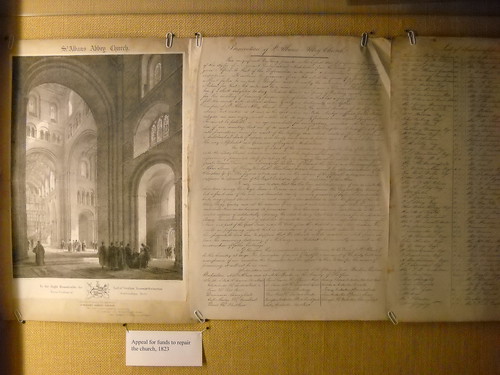 |
| Appeal for funds to repair the church, 1823 |
Actually, it was four people who undertook the massive project, often dying before they saw it complete. The one who got the most press, though, and perhaps for all the wrong reasons, was Edmund Beckett, first Baron Grimthorpe.
Nikolaus Pevsner calling Grimthorpe a "pompous, righteous bully" but however detestable his personality was, he had deep pockets and most of the £130,000 needed for repairs was donated by him. He also undertook to redesign parts of the cathedral himself, ignoring the architects who had been plugging away successfully for years with historically sensitive restoration. His designs were called "utterly devoid of taste", "marred by arrogance", and possessed "a lack of historic sense".
Sounds like some people I've come across in my career...but I digress...
Well, and what are you going to do when someone is given carte blanche in a project? You just wish these folks had enough sense to leave it to the experts because within twenty years he had to go back and repair sections that he had worked on previously.
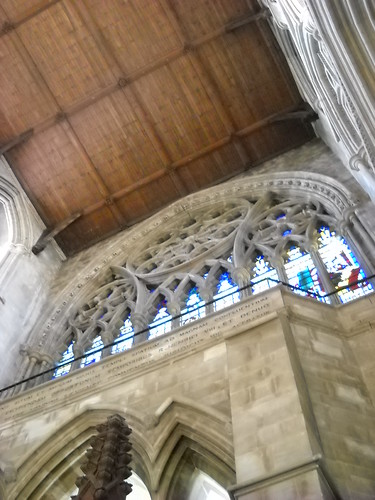 |
| The west front window re-designed by Grimthorpe |
All the kerfuffle aside, what amazed me is how colorful the abbey interior must have once been. At some point the place was white-washed but when the lime wash was removed, this wonderful Medieval painting was revealed. Unfortunately, removing the wash also diluted and damaged the color of the paint underneath.
In the Medieval period, when people couldn't read, churches were decorated with scenes such as this to help communicate the Message and offer the weary mortal traveler something to contemplate about life in the hereafter, and, let's be honest, it's much nicer to look at than those projection screens so popular in warehouse churches. I wonder how it would be if those churches just showed an image of a Medieval fresco for a whole service? If you're a regular church goer, I dare you to suggest it to the A/V director!
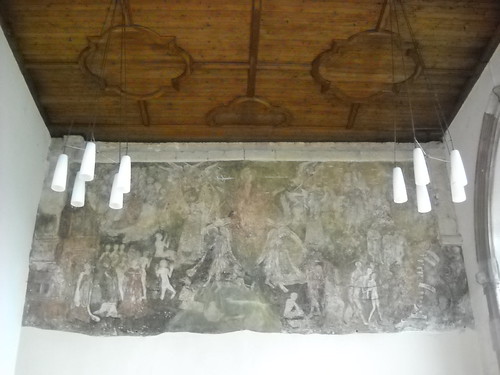 |
| Medieval fresco in the Lady Chapel at nearby Waltham Abbey depicting the Last Judgement or the separation of the sheep and the goats (Matt. 25:31-46) |
The cathedral is, needless to say, wonderful and I'm very glad I saw it. I think Celia would be pleased that it's been restored and is still a place of worship today. If someone happens to stumble on my travel diary 300 years from now they will read of the cathedral's beauty, soaring ceilings, modern graffiti in the stones (really, people? Have some respect), and the amazing acoustics. The choir was practicing for Evensong as I wandered and the sound was incredible! My future reader will also note that I think it somewhat odd to have a cafe in the cathedral chapter house, which is new, but I have to add, not without some respect, that where tourist attractions are involved the Brits have unequivocally harnessed the economic importance of cake.
For visitor information, check out http://www.stalbanscathedral.org/.
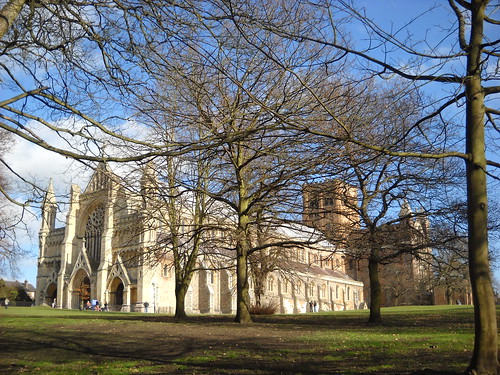
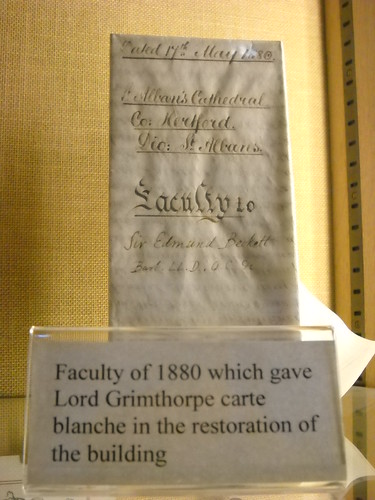
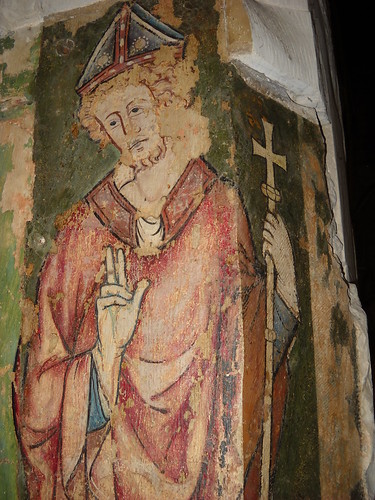

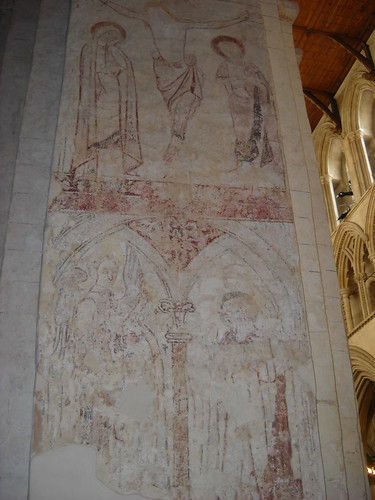
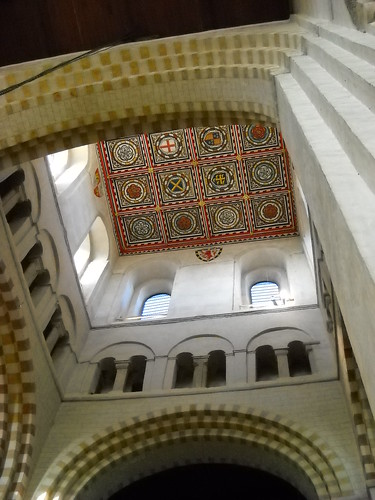





No comments:
Post a Comment